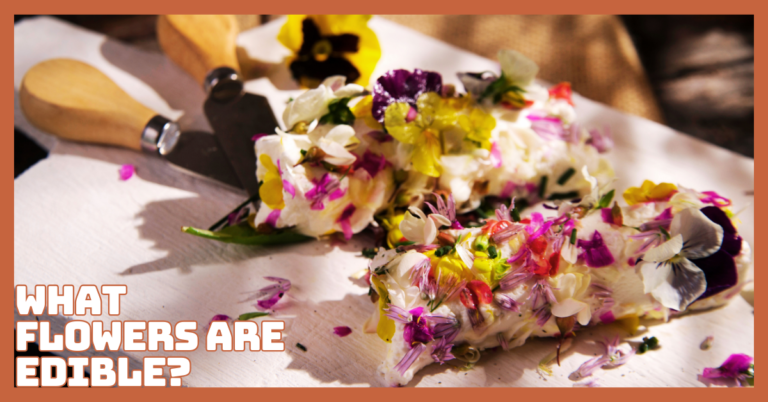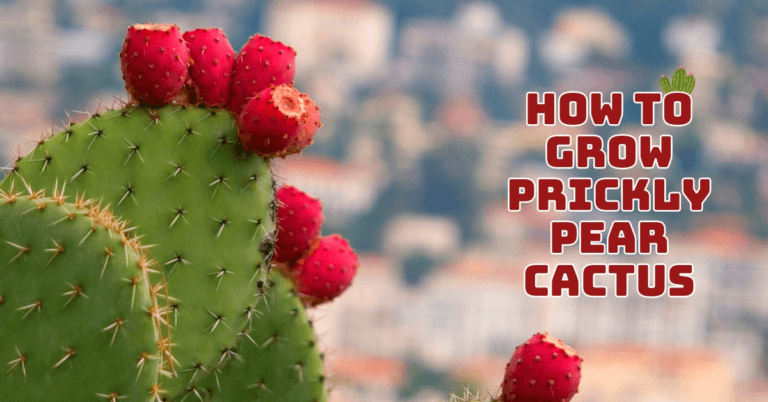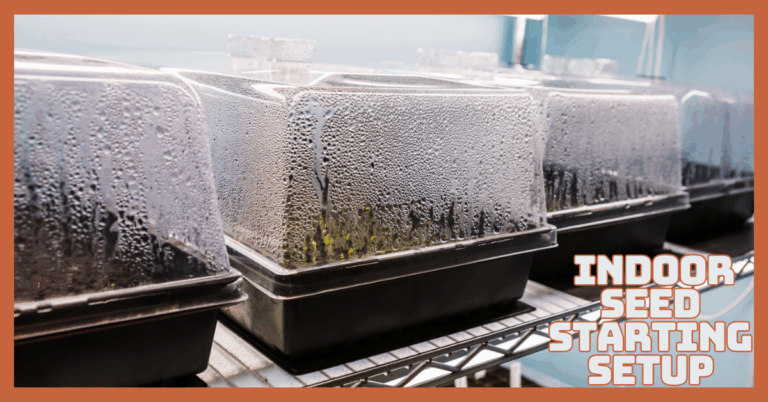How To Grow Calibrachoa
How To Grow Calibrachoa: 10 Expert Tips For Thriving Plants
Calibrachoa, commonly called “Million Bells,” is a stunning addition to any garden with vibrant, cascading flowers.
Knowing how to grow calibrachoa can help you enjoy its endless blooms from spring through fall.
Perfect for hanging baskets, containers, or garden beds, this plant thrives with minimal effort when given proper care. Regardless of your level of gardening experience, following this guide will guarantee that your calibrachoa grows nicely.

Understanding Calibrachoa
Before we discuss the practicalities, it’s essential to understand calibrachoa and why gardeners love it.
1. Family And Origin
Calibrachoa is a member of the Solanaceae family, which is closely related to petunias. Native to South America, it thrives in warm climates.
2. Growth Habit
Calibrachoa is a delicate perennial that is frequently planted yearly. It is highly valued for its trailing habit, which makes it ideal for patio containers, window boxes, and hanging baskets.
3. Flowers And Colours
The blooms are small and trumpet-shaped and come in various vibrant colours, including pink, purple, red, yellow, orange, and even bicoloured varieties.
Types Of Calibrachoa
Whether you’re planting in hanging baskets, containers, or garden beds, there’s a calibrachoa variety perfect for your needs. Here are some popular types of calibrachoa to consider:
1. Superbells® Series
- Features: Known for their abundant blooms and resistance to diseases.
- Colours: Available in a wide range, including red, pink, purple, and coral.
- Best For: Hanging baskets and containers due to their trailing habit.
2. Million Bells® Series
- Features: Renowned for heat tolerance and prolific flowering.
- Colours: Includes bright shades like yellow, orange, and bicoloured varieties.
- Best For: Sunny areas where you want continuous colour.
3. MiniFamous® Series
- Features: Compact growth, ideal for small spaces or tight arrangements.
- Colours: Soft pastels and vibrant shades like magenta and blue.
- Best For: Window boxes or smaller hanging baskets.
4. Cabaret® Series
- Features: Offers early blooming with uniform growth.
- Colours: Vibrant hues, including deep burgundy and two-toned options.
- Best For: Mixed container arrangements for a pop of colour.
5. Aloha Kona® Series
- Features: Larger blooms and vigorous growth.
- Colours: Tropical shades like orange, pink, and purple.
- Best For: Creating a lush, tropical-inspired garden.
6. Calitastic® Series
- Features: Compact plants with continuous flowering.
- Colours: Unique shades like chocolate and black cherry.
- Best For: Standalone pots or mixed planters.
7. Can-Can® Series
- Features: Larger flowers with eye-catching patterns.
- Colours: Includes striking bicolours and veined blooms.
- Best For: Statement pieces in garden beds or containers.
Calibrachoa Hardiness Zone
Calibrachoa is a tender perennial that is often grown annually in most climates. Understanding its hardiness zone is crucial for ensuring optimal growth and care.
USDA Hardiness Zone
- Calibrachoa thrives in zones 9 through 11, with pleasant temperatures and mild winters.
- Calibrachoa can survive year-round. In some zones, it may even bloom during the cooler months.
Outside Of Hardiness Zones
- In zones 8 and below, calibrachoa cannot survive freezing temperatures. It is typically treated as an annual, replanted each spring after the last frost.
- Alternatively, calibrachoa can be overwintered indoors in cooler zones by placing containers in a bright, frost-free space.
Temperature Tolerance Of Calibrachoa
- Optimal Range: Calibrachoa thrives in temperatures between 55°F and 85°F.
- Frost Sensitivity: It is susceptible to frost and wilt or die if exposed to freezing temperatures.
Practical Example
If you live in zone 7, you can enjoy calibrachoa as an annual through the fall by planting it outside after the last frost date in the spring. For zone 10 gardeners, calibrachoa can be grown as a perennial, offering blooms almost year-round with proper care.
Knowing the hardiness zone can help you determine how best to grow calibrachoa and whether overwintering indoors is viable!
How To Grow Calibrachoa
Calibrachoa, known for its vibrant blooms, thrives in full sun and well-draining soil. With proper care, it can flourish in containers, hanging baskets, or garden beds.
1. Selecting The Perfect Spot To Grow Calibrachoa
Calibrachoa loves sunlight and thrives in areas with:
Full Sun
Ensure the plant receives at least 6-8 hours of direct sunlight daily. In regions with intense heat, afternoon shade can help prevent wilting.
Well-Draining Soil
Soggy soil may cause root rot. Use a high-quality potting mix with good container drainage or amend garden soil with compost and sand to improve aeration.
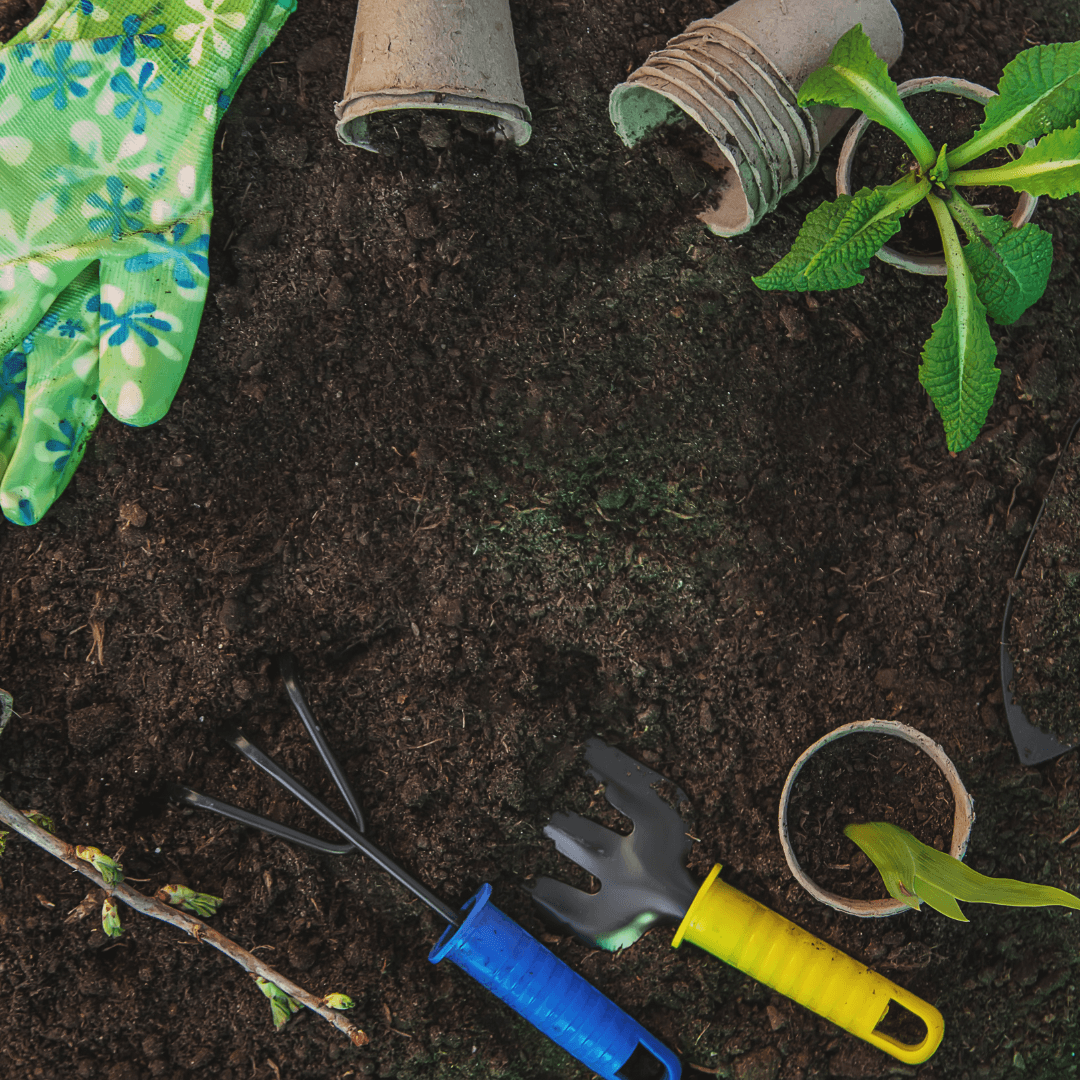
2. Planting Calibrachoa
Containers Or Hanging Baskets
Use containers with drainage holes. Fill them with a lightweight potting mix rich in organic matter.
Spacing
If planting in the ground, space plants about 6-12 inches apart to allow airflow and prevent diseases.
Planting Depth
Plant calibrachoa at the same depth it was in its nursery container. Burying it too deep can stress the plant.
3. Watering Needs Of Calibrachoa
Calibrachoa prefers consistent moisture but does not like to sit in water. Here’s how to strike the balance:
Container Plants
Check the top inch of soil. If it feels dry, water thoroughly until it drains from the bottom.
Garden Plants
Water frequently 3 times a week during dry spells.
Avoid Overwatering
Yellowing leaves can indicate overwatering. Adjust your schedule accordingly.
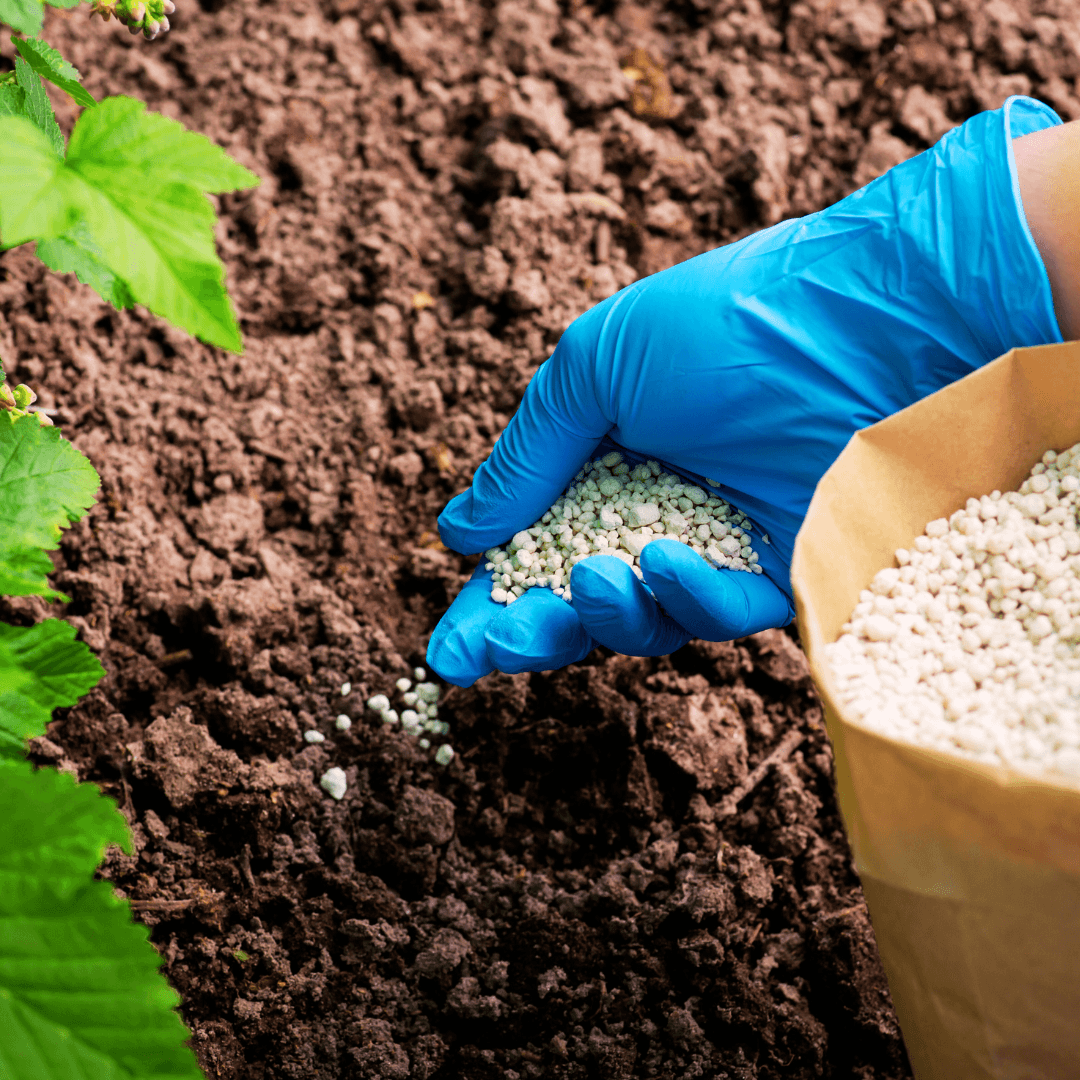
4. Fertilizing Calibrachoa For Optimal Growth
To ensure healthy blooms when learning to grow calibrachoa, feed weekly with a balanced liquid fertilizer, use slow-release granules for sustained nutrition, and adjust for iron deficiencies if foliage yellows.
Liquid Fertilizer
Feed weekly with a balanced liquid fertilizer (e.g., 10-10-10) to promote vigorous blooming.
Slow-Release Fertilizer
Mix slow-release granules into the soil at planting time for sustained nutrition.
5. Calibrachoa Bloom Time
Calibrachoa is renowned for its long-lasting blooms, which can brighten your garden from spring through fall. Understanding its bloom time is essential for ensuring you get the most out of its vibrant flowers.
Start Of Blooming
Calibrachoa typically blooms in late spring, around late April to early May, depending on your climate and planting conditions.
Continuous Blooming
Throughout the summer and early fall, calibrachoa will continue to bloom once it starts. With proper care, it can bloom consistently, especially in containers and hanging baskets.
End Of Blooming
The bloom season usually ends when temperatures drop significantly in late fall. In cooler climates, calibrachoa will die off with the first frost.
6. Pruning And Deadheading Calibrachoa
While calibrachoa is generally self-cleaning, occasional maintenance can enhance its appearance:
Deadheading
Encourage fresh blooms by removing spent flowers.
Pinching Back
If your plant becomes leggy, pinch back the stems by a third to promote bushier growth.

7. Dealing With Pests And Diseases Of Calibrachoa
Calibrachoa is relatively hardy, but it can fall victim to pests and diseases if not cared for properly:
Aphids And Spider Mites
Control infestations with insecticidal soap or neem oil.
Powdery Mildew
Ensure good airflow around plants and avoid overhead watering to prevent fungal issues.
Root Rot
Avoid overwatering and use well-draining soil.
8. Seasonal Care For Calibrachoa
Seasonal care for calibrachoa ensures vibrant blooms year-round. Each season, from starting seeds in spring to overwintering in cold climates, requires specific care for optimal growth.
Spring
- Start calibrachoa indoors 6-8 weeks before the last frost if growing from seed.
- Transplant seedlings or nursery-bought plants outdoors once all danger of frost has passed.
Summer
- Maintain consistent watering and fertilizing.
- Watch for pests, especially during humid conditions.
Fall
- As temperatures cool, calibrachoa may slow down. Reduce watering and deadhead regularly to prolong the blooming season.
- In frost-free zones, calibrachoa can overwinter and return the following year.
Winter
- If you live in a cold climate, calibrachoa won’t survive outdoors. However, you can try overwintering by bringing pots indoors and placing them in a bright, cool room. Water sparingly.
Creative Uses For Calibrachoa In Your Garden
Discover how to grow calibrachoa creatively by using them in hanging baskets, container arrangements, or as vibrant ground cover to enhance any garden space. Here are some creative ways to incorporate calibrachoa into your garden design:

1. Hanging Baskets And Containers
One of the most popular ways to use calibrachoa is in hanging baskets. Its tendency to grow trailingly makes it ideal for spilling over container sides to bring a splash of colour up to eye level. Put various types of calibrachoa in your baskets to create a beautiful display with complementing colours.
2. Mixed-Plant Containers
Calibrachoa pairs well with other plants in mixed containers. Its compact nature and long flowering season make it a great companion for other sun-loving plants.
Combine it with petunias, geraniums, or lobelia for a colourful container garden that requires minimal maintenance.
3. Flower Beds And Borders
Although commonly used in containers, calibrachoa also looks great in borders and flower beds. It is perfect for planting around garden bed boundaries since it trails, allowing it to overflow the side and creating a gentle, organic appearance.
4. Vertical Gardens And Wall Planters
If you have limited space, vertical gardening is a great way to grow calibrachoa. Use wall-mounted planters, pocket gardens, or vertical plant racks to create cascading displays of colourful flowers. Calibrachoa’s trailing vines work beautifully in vertical settings, adding a three-dimensional effect to your garden.
5. In Hanging Window Boxes
Learn how to grow calibrachoa in hanging window boxes to bring a charming, colourful touch to small spaces or apartment exteriors.
These boxes can add colour to your home’s exterior and are especially effective for apartments or tiny houses with limited space.
6. Rock Gardens
Calibrachoa's compact size and low-growing nature make it an excellent choice for rock gardens. Its vibrant flowers contrast beautifully against the neutral tones of rocks, and it thrives in well-drained soil.
7. Stepping Stones Or Pathways
Use calibrachoa to line garden pathways or stepping stones. Its trailing vines can spill over the edges of walkways, adding a soft and welcoming touch.
8. As Groundcover
Calibrachoa can also be used as groundcover, especially in smaller garden areas or as a filler around other plants. Its dense, trailing growth habit helps it quickly cover the soil, reducing weed growth while providing vibrant colour.
9. In A Fairy Garden
Calibrachoa is a delightful choice for fairy gardens, with its delicate, trumpet-shaped flowers and trailing habit. Available in a rainbow of colours, it adds charm to miniature landscapes.
Plant it in tiny pots, teacups, or around fairy figurines to create a magical setting that feels like a storybook coming to life.

10. Balcony And Patio Gardens
If you have a small balcony or patio, Calibrachoa is an excellent option for creating a colourful space without taking up too much room.
Get tips on growing calibrachoa in tiny areas. You can add them to hanging baskets or pots and combine them with other plants to create a colourful and lush arrangement.
11. Edging Around Containers
Use calibrachoa as an edging plant to add interest to your container gardens. Its trailing vines will soften the container's hard edges, creating a more natural and elegant look.
Troubleshooting Common Problems With Calibrachoa
While calibrachoa is generally a low-maintenance and hardy plant, it can occasionally face issues that may hinder its growth or bloom. Here’s a guide to help you troubleshoot and solve some common problems:
1. Leggy Or Sparse Growth
Problem
Your calibrachoa is growing tall, but none seems shy, or the growth looks thin and sparse.
Possible Causes
- Lack of Sunlight: Calibrachoa requires full sun to thrive. Without enough sunlight, it may become leggy and produce fewer blooms.
- Overwatering: Too much water or poor drainage can cause root rot and weak growth.
- Nutrient Deficiency: A lack of nutrients, especially nitrogen, can lead to sparse growth.
Solution
- Increase Sun Exposure: Move the plant to a sunnier spot, receiving at least 6 hours of direct sunlight daily.
- Improve Drainage: Ensure the soil drains well, and adjust your watering schedule so the soil doesn’t stay soggy.
- Fertilize: A balanced water-soluble fertilizer to restore nutrients and promote new growth. Pinch down lanky stems to encourage bushier growth.
2. No Blooms Or Fewer Blooms
Problem
Your calibrachoa isn’t blooming or producing fewer flowers than expected.
Possible Causes
- Insufficient Light: Without enough direct sunlight, calibrachoa will not bloom as vigorously.
- Over-fertilization: Rich leaf growth at the expense of blossoms can result from over-fertilization, particularly with nitrogen.
- Overwatering: Excessive watering can cause root stress, leading to reduced flowering.
Solution
- Ensure Adequate Sunlight: Understanding how to grow calibrachoa includes ensuring full sunlight, proper watering with good drainage, and using slow-release fertilizer sparingly for optimal health.
- Reduce Fertilizer: Avoid overfeeding and switch to a slow-release fertilizer. Apply sparingly.
- Water Properly: MaWater the plant deeply but never waterlogged. Ensure the container or bed has proper drainage.
3. Yellowing Leaves
Problem
The leaves of your calibrachoa are turning yellow, which can indicate various issues.
Possible Causes
- Overwatering: Root rot, typically brought on by overwatering, is frequently indicated by yellowing leaves.
- Nutrient Deficiency: Yellowing may result from a deficiency of vital nutrients, particularly iron or nitrogen.
- Pests: Aphids or spider mites feeding on the leaves can lead to yellowing or distorted growth.
Solution
- Check for Root Rot: Check the roots for rot if you notice yellowing leaves and soggy soil. Trim away any affected roots, improve drainage, and reduce watering.
- Fertilize: Use a balanced fertilizer or one high in iron to correct nutrient deficiencies.
- Pest Control: Inspect the plant for pests like aphids or spider mites. Treat them with insecticidal soap or neem oil, thoroughly covering the afflicted areas. Repeat the application as needed to eliminate the pests completely.
4. Brown Or Crispy Leaf Edges
Problem
The edges of the leaves turn brown and crispy, especially in hot weather.
Possible Causes
- Heat Stress: Calibrachoa prefers moderate temperatures. Suppose the weather gets too hot.
- Low Humidity: Crispy edges may arise from the leaves drying out due to dry air.
Solution
- Move to a Shadier Spot: During the hottest parts of the day, consider moving your calibrachoa to a location that offers partial shade, especially in regions with intense summer heat.
- Increase Humidity: If grown in containers, especially in a dry climate, mist the plant lightly or group plants together to improve humidity.
5. Pests (Aphids, Spider Mites, Whiteflies)
Problem
Your calibrachoa shows signs of pest damage, such as discoloured or deformed leaves and stunted growth.
Possible Causes
- Aphids: Small, soft-bodied insects that cluster on new growth and suck the sap from the plant.
- Spider Mites: Tiny red or brown pests that create webs and cause leaf discolouration and speckling.
- Whiteflies: Small, white-flying insects that can weaken the plant and spread diseases.
Solution
- Insecticidal Soap: Spray the plant with an insecticidal soap or neem oil to target and eliminate pests.
- Natural Predators: Add beneficial insects like ladybugs or predatory mites to control pest numbers naturally.
- Regular Inspection: Regularly check the undersides of leaves and new growth for signs of pests.
6. Root Rot
Problem
Knowing how to grow calibrachoa involves addressing issues like root rot, often caused by overwatering or poor drainage, to keep plants healthy and thriving.
Possible Causes
- Excessive Moisture: Rot can result from the roots sitting in water due to overwatering or inadequate drainage.
- Improper Containers: Containers without proper drainage holes can cause water to accumulate, leading to root rot.
Solution
- Check the Roots: If it appears to have rot, take it from its container and inspect the roots. Remove any mushy or charred roots.
- Improve Drainage: Repot the plant in a well-draining pot with drainage holes. Ensure the soil is light and airy, such as a mix for hanging baskets or containers.
- Reduce Watering: Water only when the soil has dried out slightly.
Conclusion
Mastering how to grow calibrachoa ensures vibrant, thriving blooms that enhance any outdoor space with their versatility and beauty.
By providing proper sunlight, well-draining soil, regular watering, and occasional pruning, you can enjoy vibrant blooms throughout the season.
Calcachoa's adaptability makes it an ideal addition to any garden, whether grown in hanging baskets, garden beds, or containers.
If you follow this professional advice, you may have vibrant, flourishing plants that enhance the appearance of your outside area.
I trust you enjoyed this article on How To Grow Calibrachoa: 10 Expert Tips For Thriving Plants. Stay tuned for more blog posts soon. Take care!
JeannetteZ
>>>Please click here to read my all-inclusive article, About The Essential Companion Planting Guide<<<
>>>Please click here to read my all-inclusive article about Container Gardening<<<
>>>Are you interested in homegrown herbs and medicine? Please click here to find out more about it!<<<
Your Opinion Is Important To Me
Do you have thoughts, ideas, or questions? I would love to hear from you. Please leave me your questions, experiences, and remarks about this article, How To Grow Calibrachoa: 10 Expert Tips For Thriving Plants, in the comments section below. You can also email me at Jeannette@Close-To-Nature.org.
Disclosure
This post may contain affiliate links. As an Amazon Associate and other affiliate programs, I earn from qualifying purchases at no extra cost to you. Please read my full affiliate disclosure.
You might also enjoy these blog posts:
Aeroponics vs Hydroponics: Which Soilless Farming Method Reigns Supreme?
How To Build A DIY Hydroponic System
The Ultimate Guide To Companion Flowers For Vegetables
Top 10 Companion Plants For Tomatoes
The Best Plants For Hydroponics And How To Grow Them
10 Winning Herb And Vegetable Companion Planting Combinations


